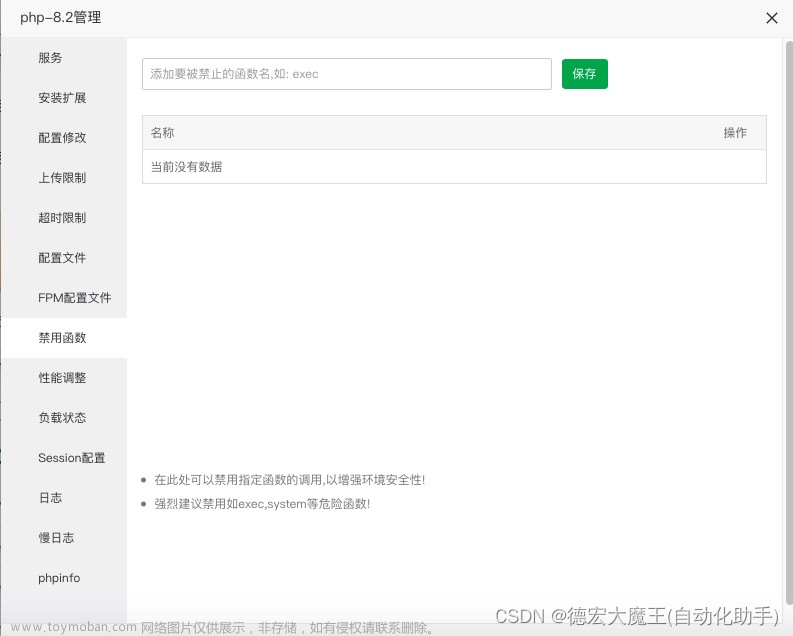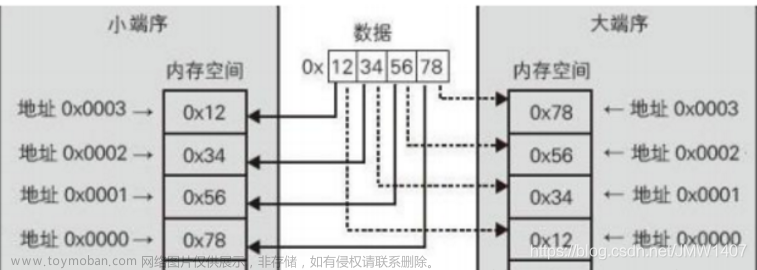//SHA1相关函数//
typedef struct SHA1Context
{
uint32_t Intermediate_Hash[SHA1HashSize/4]; /* Message Digest /
uint32_t Length_Low; / Message length in bits /
uint32_t Length_High; / Message length in bits /
/ Index into message block array /
int_least16_t Message_Block_Index;
uint8_t Message_Block[64]; / 512-bit message blocks /
int Computed; / Is the digest computed? /
int Corrupted; / Is the message digest corrupted? /
} SHA1Context;
/
- SHA1Reset-此函数将初始化准备中的SHA1上下文,用于计算新的SHA1消息摘要。
*/
int SHA1Reset(SHA1Context context){
if (!context)
{
return shaNull;
}
context->Length_Low = 0;
context->Length_High = 0;
context->Message_Block_Index = 0;
context->Intermediate_Hash[0] = 0x67452301;//取得的HASH结果(中间数据)
context->Intermediate_Hash[1] = 0xEFCDAB89;
context->Intermediate_Hash[2] = 0x98BADCFE;
context->Intermediate_Hash[3] = 0x10325476;
context->Intermediate_Hash[4] = 0xC3D2E1F0;
context->Computed = 0;
context->Corrupted = 0;
return shaSuccess;
}
/ - SHA1Result此函数将160位消息摘要返回到调用方提供的Message_Digest数组。
*/
int SHA1Result( SHA1Context context,uint8_t Message_Digest[SHA1HashSize])
{
int i;
if (!context || !Message_Digest)
{
return shaNull;
}
if (context->Corrupted)
{
return context->Corrupted;
}
if (!context->Computed)
{
SHA1PadMessage(context);
for(i=0; i<64; ++i)
{
/ message may be sensitive, clear it out /
context->Message_Block[i] = 0;
}
context->Length_Low = 0; / and clear length /
context->Length_High = 0;
context->Computed = 1;
}
for(i = 0; i < SHA1HashSize; ++i)
{
Message_Digest[i] = context->Intermediate_Hash[i>>2]
>> 8 * ( 3 - ( i & 0x03 ) );
}
return shaSuccess;
}
/ - SHA1Input
*/
int SHA1Input( SHA1Context *context,const uint8_t *message_array,unsigned length)
{
if (!length)
{
return shaSuccess;
}
if (!context || !message_array)
{
return shaNull;
}
if (context->Computed)
{
context->Corrupted = shaStateError;
return shaStateError;
}
if (context->Corrupted)
{
return context->Corrupted;
}
while(length-- && !context->Corrupted)
{
context->Message_Block[context->Message_Block_Index++] = (message_array & 0xFF);
context->Length_Low += 8;
if (context->Length_Low == 0)
{
context->Length_High++;
if (context->Length_High == 0)
{
/ Message is too long */
context->Corrupted = 1;
}
}
if (context->Message_Block_Index == 64)
{
SHA1ProcessMessageBlock(context);
}
message_array++;
}
return shaSuccess;
}
//SHA256相关函数//
typedef struct SHA256_CTX{
BYTE data[64];
WORD datalen;
unsigned long long bitlen;
WORD state[8];
} OWN_SHA256_CTX;
void sha256_transform(OWN_SHA256_CTX *ctx, const uint8_t *data)
{
WORD a, b, c, d, e, f, g, h, i, j, t1, t2, m[64];
// initialization
for (i = 0, j = 0; i < 16; ++i, j += 4){
m[i] = (data[j] << 24) | (data[j + 1] << 16) | (data[j + 2] << 8) | (data[j + 3]);
}
for ( ; i < 64; ++i){
m[i] = SIG1(m[i - 2]) + m[i - 7] + SIG0(m[i - 15]) + m[i - 16];
}
a = ctx->state[0];
b = ctx->state[1];
c = ctx->state[2];
d = ctx->state[3];
e = ctx->state[4];
f = ctx->state[5];
g = ctx->state[6];
h = ctx->state[7];
for (i = 0; i < 64; ++i) {
t1 = h + EP1(e) + CH(e,f,g) + k[i] + m[i];
t2 = EP0(a) + MAJ(a,b,c);
h = g;
g = f;
f = e;
e = d + t1;
d = c;
c = b;
b = a;
a = t1 + t2;
}
ctx->state[0] += a;
ctx->state[1] += b;
ctx->state[2] += c;
ctx->state[3] += d;
ctx->state[4] += e;
ctx->state[5] += f;
ctx->state[6] += g;
ctx->state[7] += h;
}
void sha256_init(OWN_SHA256_CTX *ctx)
{
ctx->datalen = 0;
ctx->bitlen = 0;
ctx->state[0] = 0x6a09e667;
ctx->state[1] = 0xbb67ae85;
ctx->state[2] = 0x3c6ef372;
ctx->state[3] = 0xa54ff53a;
ctx->state[4] = 0x510e527f;
ctx->state[5] = 0x9b05688c;
ctx->state[6] = 0x1f83d9ab;
ctx->state[7] = 0x5be0cd19;
}
void sha256_update(OWN_SHA256_CTX *ctx, const uint8_t *data, size_t len)
{
WORD i;
for (i = 0; i < len; ++i) {
ctx->data[ctx->datalen] = data[i];
ctx->datalen++;
if (ctx->datalen == 64) {
// 64 byte = 512 bit means the buffer ctx->data has fully stored one chunk of message
// so do the sha256 hash map for the current chunk
sha256_transform(ctx, ctx->data);
ctx->bitlen += 512;
ctx->datalen = 0;
}
}
}
void sha256_final(OWN_SHA256_CTX *ctx, uint8_t *hash)
{
WORD i;
i = ctx->datalen;
// Pad whatever data is left in the buffer.
if (ctx->datalen < 56) {
ctx->data[i++] = 0x80; // pad 10000000 = 0x80
while (i < 56)
ctx->data[i++] = 0x00;
}
else {
ctx->data[i++] = 0x80;
while (i < 64)
ctx->data[i++] = 0x00;
sha256_transform(ctx, ctx->data);
memset(ctx->data, 0, 56);
}文章来源:https://www.toymoban.com/news/detail-811787.html
// Append to the padding the total message's length in bits and transform.
ctx->bitlen += ctx->datalen * 8;
ctx->data[63] = ctx->bitlen;
ctx->data[62] = ctx->bitlen >> 8;
ctx->data[61] = ctx->bitlen >> 16;
ctx->data[60] = ctx->bitlen >> 24;
ctx->data[59] = ctx->bitlen >> 32;
ctx->data[58] = ctx->bitlen >> 40;
ctx->data[57] = ctx->bitlen >> 48;
ctx->data[56] = ctx->bitlen >> 56;
sha256_transform(ctx, ctx->data);
// copying the final state to the output hash(use big endian).
for (i = 0; i < 4; ++i) {
hash[i] = (ctx->state[0] >> (24 - i * 8)) & 0x000000ff;
hash[i + 4] = (ctx->state[1] >> (24 - i * 8)) & 0x000000ff;
hash[i + 8] = (ctx->state[2] >> (24 - i * 8)) & 0x000000ff;
hash[i + 12] = (ctx->state[3] >> (24 - i * 8)) & 0x000000ff;
hash[i + 16] = (ctx->state[4] >> (24 - i * 8)) & 0x000000ff;
hash[i + 20] = (ctx->state[5] >> (24 - i * 8)) & 0x000000ff;
hash[i + 24] = (ctx->state[6] >> (24 - i * 8)) & 0x000000ff;
hash[i + 28] = (ctx->state[7] >> (24 - i * 8)) & 0x000000ff;
}
}文章来源地址https://www.toymoban.com/news/detail-811787.html
到了这里,关于C语言---不依赖openssl的SHA算法的文章就介绍完了。如果您还想了解更多内容,请在右上角搜索TOY模板网以前的文章或继续浏览下面的相关文章,希望大家以后多多支持TOY模板网!












